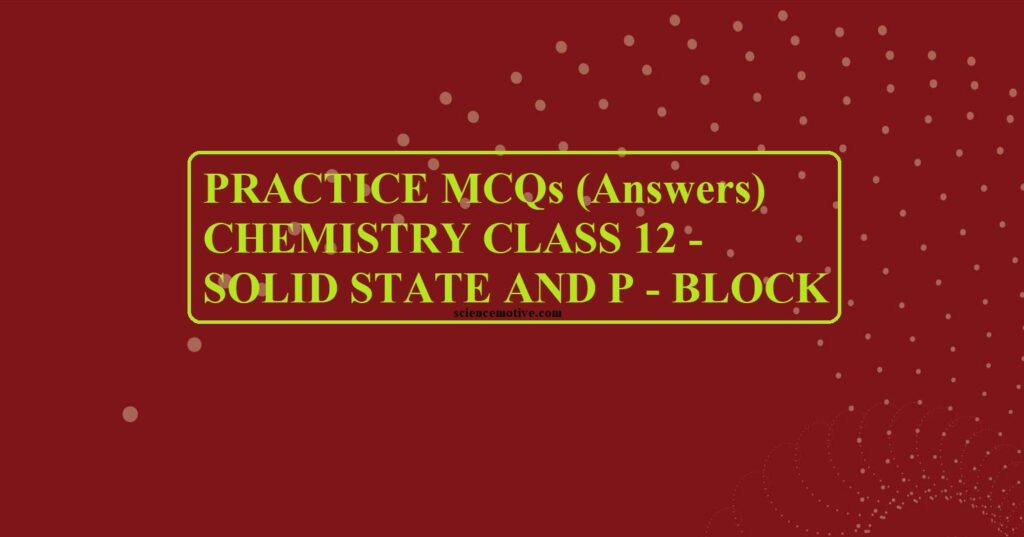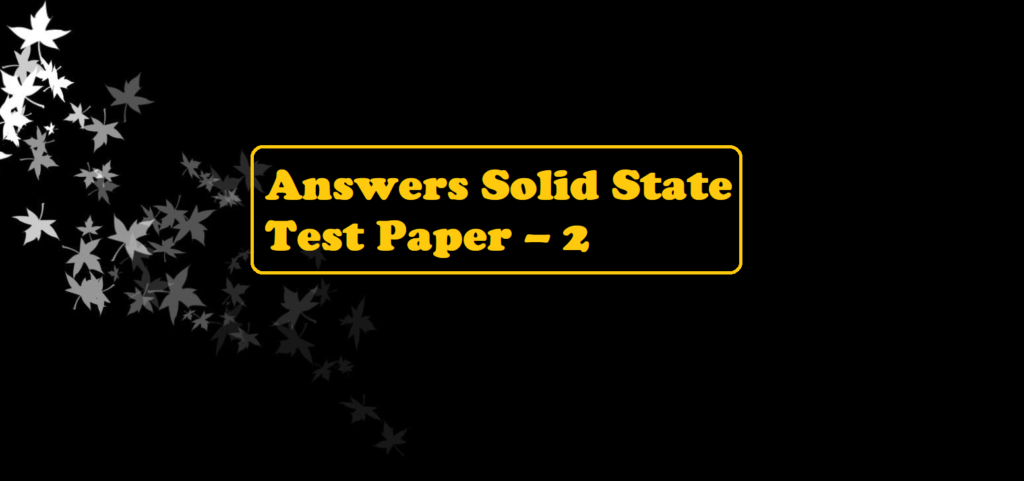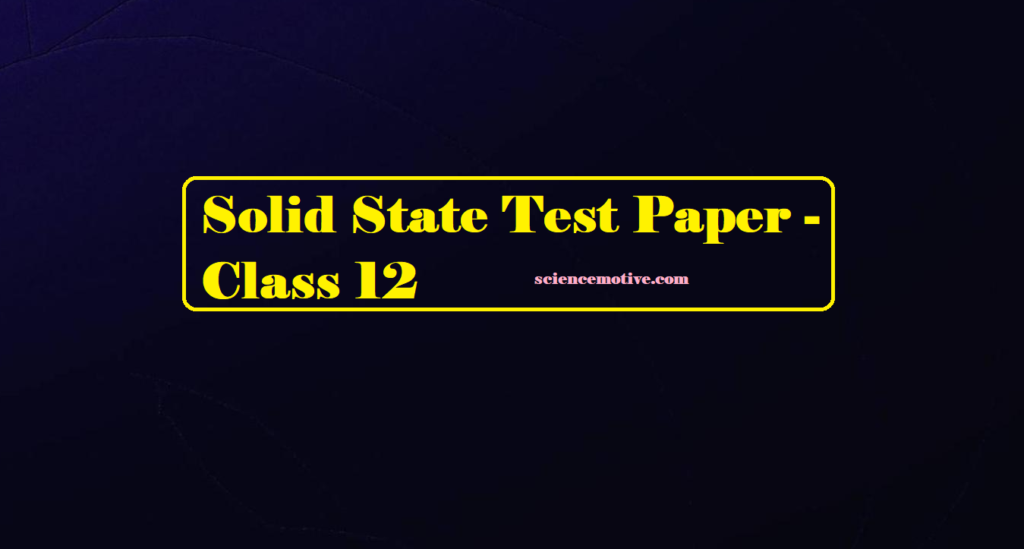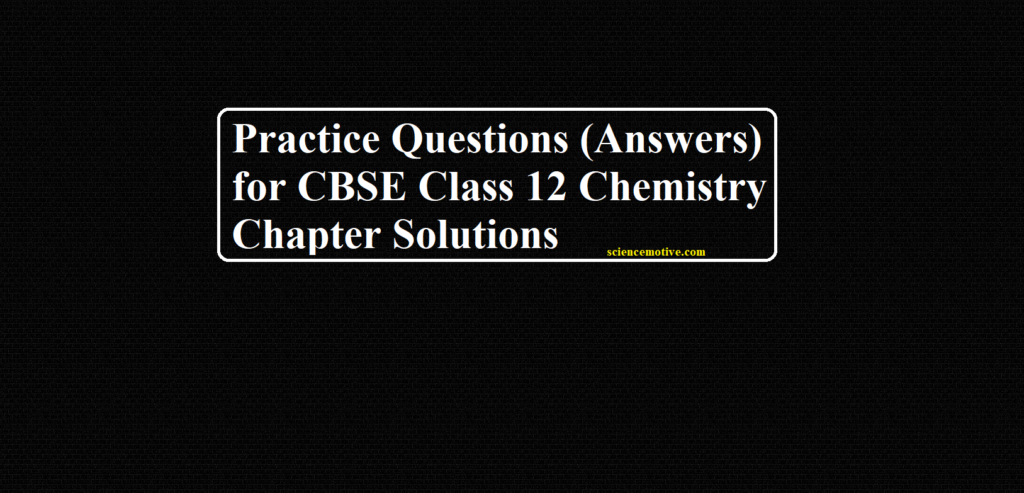In this post students will get the answers for the post Practice MCQs Chemistry Class 12 – Solid State and p – Block Elements. The link for the questions is also given at the beginning as well as at the end of the post
Practice MCQs (Answers) Chemistry Class 12
Ans 1. (d) Molecular crystal
Ans 2. (d) 1/8 part
Ans 3. (a) 32 %
Ans 4. (b) 1
Ans 5. (d) 12
Ans 6. (c) 1/8, ½
Ans 7. (b) Edge centre and body centre
Ans 8. (b) X4Y5
Ans 9. (a) XY3
Ans 10. (c) P2Q
Ans 11. (b) Half
Ans 12. (b) Fcc > Bcc > Simple cubic
Ans 13. (c) a = 2r
Ans 14. (c) 14
Ans 15. (c) 6
Ans 16. (b) ABCABC type
Ans 17. (d) 1
Ans 18. (a) Vacancy defect
Ans 19. (d) SrCl2
Ans 20. (b) 10.5
Ans 21. (c) Ionization enthalpies of O2 and Xe are almost same
Ans 22. (d) (i), (ii) and (iii)
Ans 23. (c) (ii) and (iii) both
Ans 24. (b) XeF4
Ans 25. (c) Fe(OH)3
Ans 26. (b) XeO3
Ans 27. (b) HCl and HOCl
Ans 28. (d) Boiling Point- HF< HCl < HBr < HI
Ans 29. (a) It dissolve more in C6H6
Ans 30. (a) HOCl and HClO4
Ans 31. (c) Na2SO3
Ans 32. (b) H2SO4 + SO3
Ans 33. (d) Dehydration
Ans 34. (a) ΔH = negative, ΔS = positive, ΔG = negative
Ans 35. (a) Hydrogen at the cathode and oxygen at the anode
Ans 36. (b) Thermal decomposition of sodium or barium azide.
Ans 37. (d) Trihalides except BiF3 are predominantly ionic in nature
Ans 38. (a) More
Ans 39. (d) Melting point: SbH3 > AsH3 > PH3 > NH3
Ans 40. (d) The presence of completely filled d and/or f orbitals
Practice MCQs (Answers) Chemistry Class 12
ALCOHOLS PHENOLS AND ETHERS CASE-BASED QUESTIONS – CLASS 12



